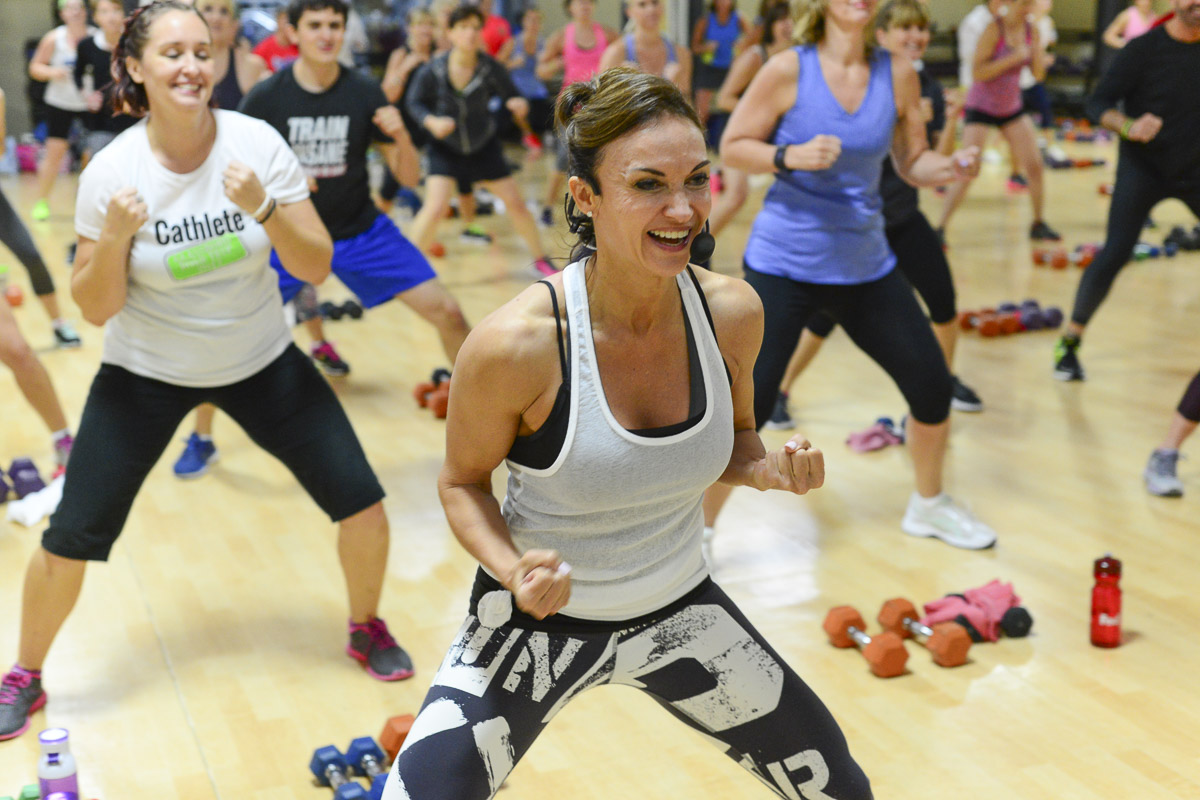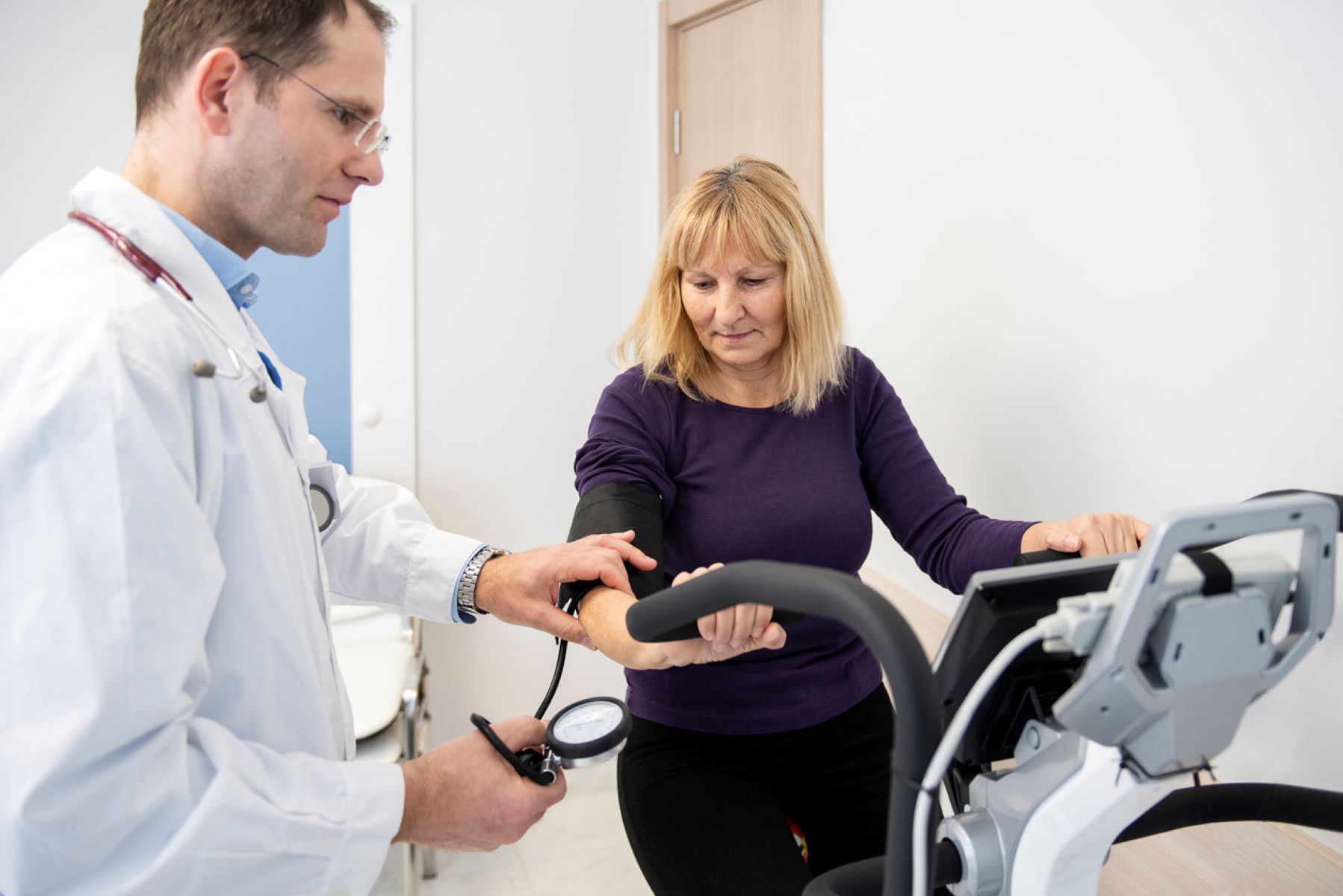

Featured
What Is A Tabletop Exercise
Published: September 28, 2023
Learn the benefits of a tabletop exercise and how it can enhance your emergency preparedness. Discover the key elements of this featured training method in just a few minutes.
Introduction
Welcome to the world of tabletop exercises! In today’s ever-changing and complex business landscape, organizations need to be prepared for a wide range of potential crises and emergencies. Whether it’s a cyber attack, natural disaster, or a public health crisis, being able to effectively respond and mitigate the impact of these events is crucial.
A tabletop exercise is a powerful tool that helps organizations test and evaluate their emergency response plans in a simulated and controlled environment. This exercise involves key personnel coming together to discuss and analyze a fictional scenario, simulating the response actions that would be taken in a real-life situation. It serves as a valuable training and preparedness tool, allowing stakeholders to identify strengths, weaknesses, and areas for improvement in their emergency response plans.
By creating a scenario that closely mirrors potential real-world situations, tabletop exercises enable participants to practice decision-making, critical thinking, and communication skills. This allows organizations to identify gaps in their plans, address any deficiencies, and enhance their ability to respond effectively when faced with a crisis.
Tabletop exercises often involve representatives from various departments or functions within an organization, such as management, operations, communications, IT, and security. By bringing together these diverse perspectives, the exercise fosters collaboration and coordination among different teams, ensuring a cohesive and integrated response.
One of the key advantages of tabletop exercises is their versatility. They can be tailored to fit the specific needs and objectives of any organization, regardless of its size or industry. From small startups to large corporations, tabletop exercises provide valuable insights that help organizations build resilience and strengthen their emergency response capabilities.
Throughout this article, we will delve deeper into the world of tabletop exercises, exploring their purpose, benefits, key components, and how to plan and conduct one. So let’s dive in and discover the power of tabletop exercises in enhancing organizational preparedness!
Definition of a Tabletop Exercise
A tabletop exercise is a collaborative and interactive simulation designed to test an organization’s emergency response plans and procedures. Unlike a full-scale drill or real-life event, tabletop exercises are conducted in a controlled environment, allowing participants to discuss, analyze, and strategize their response to a simulated crisis scenario.
During a tabletop exercise, participants gather around a table, either physically or virtually, and are presented with a hypothetical disaster or emergency situation. This scenario is carefully crafted to resemble a realistic event that could potentially impact the organization. It could be a cybersecurity breach, a natural disaster, a product recall, or any other crisis situation relevant to the organization’s operations.
The facilitator, often a trained professional with expertise in emergency management, guides the exercise and sets the stage by providing background information about the scenario. The participants then work through the hypothetical situation, discussing and evaluating the appropriate response actions they would take as if the event were unfolding in real-time.
Unlike a real-life emergency, tabletop exercises allow participants to think strategically and collaboratively. They can pause the simulation at any point to analyze the situation, evaluate their response plans, identify potential gaps, and brainstorm solutions. By engaging in thoughtful discussions and decision-making, participants gain a better understanding of their roles and responsibilities during a crisis and can enhance their overall preparedness.
Tabletop exercises are not limited to specific industries or sectors. Any organization, whether it’s a corporation, government agency, non-profit, or educational institution, can benefit from conducting tabletop exercises. The scenarios can be tailored to suit the specific needs and risks faced by the organization.
By engaging in a simulated exercise, organizations can assess their readiness to handle a crisis, identify areas for improvement in their emergency response plans, and enhance coordination and communication among different teams and departments. Tabletop exercises are an effective way to ensure that key stakeholders are familiar with their roles and responsibilities, understand the decision-making processes, and are prepared to respond effectively in a real crisis.
Purpose of Tabletop Exercises
Tabletop exercises serve a variety of purposes, all aimed at enhancing an organization’s preparedness and response capabilities in the face of potential crises. Let’s explore some key purposes of tabletop exercises:
- Evaluate Emergency Response Plans: One of the primary purposes of tabletop exercises is to assess the effectiveness of an organization’s emergency response plans. By simulating different crisis scenarios, organizations can identify strengths and weaknesses in their plans, identify any gaps or deficiencies, and make necessary adjustments to improve their overall preparedness.
- Assess Decision-Making and Critical Thinking: Tabletop exercises provide an opportunity for participants to practice their decision-making and critical thinking skills in a controlled environment. They can test different strategies, evaluate their consequences, and learn from the outcomes. This prepares them to make quick, informed, and effective decisions during real-life crises.
- Promote Collaboration and Coordination: During tabletop exercises, participants from different departments or functions within an organization come together to work through a crisis scenario. This fosters collaboration, coordination, and communication among teams, allowing them to understand each other’s roles and responsibilities and work together towards a common goal. It also helps identify any potential communication issues or gaps in coordination that need to be addressed.
- Increase Familiarity with Roles and Responsibilities: Tabletop exercises provide a platform for participants to become familiar with their specific roles and responsibilities during a crisis. They can understand the chain of command, the decision-making processes, and the communication channels that need to be followed. This increased familiarity empowers individuals to act confidently and efficiently during real emergencies.
- Identify Training and Resource Needs: Through tabletop exercises, organizations can identify any training gaps or resource deficiencies that may hinder their response to a crisis. This includes identifying the need for additional training programs, equipment, or resources to better prepare the organization for potential emergencies.
- Test and Validate Operational Procedures: Tabletop exercises allow organizations to test and validate their operational procedures, such as communication protocols, notification systems, and logistical arrangements. By identifying any flaws or inefficiencies in these procedures, organizations can make improvements and ensure smoother operations during actual crisis situations.
Overall, the purpose of tabletop exercises is to enhance an organization’s preparedness and response capabilities. They provide a safe and controlled environment to evaluate emergency response plans, practice decision-making and critical thinking, promote collaboration and coordination, increase familiarity with roles and responsibilities, identify training and resource needs, and test operational procedures. By conducting tabletop exercises regularly, organizations can continuously improve their ability to respond effectively and mitigate the impact of potential crises.
Benefits of Tabletop Exercises
Tabletop exercises offer numerous benefits to organizations, helping them enhance their preparedness, response capabilities, and overall resilience. Let’s explore some of the key benefits of conducting tabletop exercises:
- Identification of Weaknesses and Gaps: Tabletop exercises provide organizations with an opportunity to identify weaknesses, gaps, and deficiencies in their emergency response plans. By simulating realistic scenarios, organizations can uncover vulnerabilities and areas that need improvement, allowing them to make necessary adjustments and strengthen their preparedness for potential crises.
- Improved Decision-Making and Critical Thinking: Participating in tabletop exercises allows individuals to engage in critical thinking and decision-making under simulated pressure. This practice helps them develop their decision-making skills, allowing them to make informed choices and react effectively during real-life emergencies.
- Enhanced Collaboration and Communication: Tabletop exercises bring together participants from different departments and functions within an organization. By working through a simulated crisis scenario, they learn to collaborate, communicate, and coordinate their efforts effectively. This strengthens interdepartmental relationships, ensures a cohesive response, and fosters better teamwork during actual emergencies.
- Increased Familiarity with Processes and Roles: Through tabletop exercises, participants gain a better understanding of their roles and responsibilities during a crisis. They become familiar with the organization’s emergency response processes, including communication channels, decision-making protocols, and reporting structures. This familiarity enhances their confidence and enables them to perform their duties efficiently during real emergencies.
- Validation of Plans and Procedures: Tabletop exercises provide a platform to validate and test the effectiveness of emergency response plans, procedures, and protocols. By identifying any flaws or inefficiencies, organizations can refine their plans and ensure they are robust and efficient in mitigating the impact of potential crises.
- Training and Skill Development: Participating in tabletop exercises helps individuals acquire new skills, such as crisis management, communication, and problem-solving. These exercises serve as valuable training opportunities, allowing individuals to learn and practice techniques, strategies, and best practices in a safe and controlled environment.
- Identification of Training and Resource Needs: Through tabletop exercises, organizations can identify any training gaps or resource deficiencies that may hinder their response to a crisis. This insight enables them to address these needs proactively, whether through training programs, equipment upgrades, or resource allocation, ensuring they have the necessary tools and knowledge to respond effectively.
Overall, tabletop exercises offer a wide range of benefits, including the identification of weaknesses and gaps, improved decision-making and critical thinking skills, enhanced collaboration and communication, increased familiarity with processes and roles, validation of plans and procedures, training and skill development, and identification of training and resource needs. By regularly conducting tabletop exercises, organizations can continuously improve their preparedness and response capabilities, ultimately helping them navigate and overcome crises with confidence and resilience.
Key Components of a Tabletop Exercise
Tabletop exercises are structured and organized simulations that involve several key components to ensure their effectiveness. Let’s explore the key components that make up a tabletop exercise:
- Scenario Development: The scenario is the backbone of a tabletop exercise. It is carefully developed to simulate a realistic crisis situation that the organization may potentially face. The scenario should be relevant to the organization’s industry, operations, and potential risks. It should be detailed enough to provide necessary information, but also leave room for participants to think critically and make decisions.
- Objectives and Goals: Clear and measurable objectives and goals for the exercise should be established. These objectives guide the exercise and help evaluate its success. Objectives can include testing specific response procedures, evaluating communication channels, or assessing decision-making processes. The goals should align with the organization’s overall emergency preparedness objectives.
- Participant Roles and Responsibilities: Participants in a tabletop exercise should represent various roles and responsibilities within the organization. This includes key personnel from different departments or functions, such as senior management, operations, communications, IT, and security. Each participant should understand their role and responsibilities during the exercise, ensuring a realistic and collaborative simulation.
- Facilitator and Support Staff: A trained facilitator should lead the tabletop exercise. The facilitator guides the participants through the scenario, ensures the exercise stays on track, and facilitates discussions and decision-making. Additional support staff may be required to handle logistics, technical aspects, or record observations and feedback during the exercise.
- Simulation Materials: The facilitator prepares various simulation materials to enrich the exercise. These materials can include background information about the scenario, news articles, incident reports, emails, or communication logs. These materials help immerse participants in the simulated crisis and provide valuable context for their decision-making.
- Discussion and Decision-Making: The heart of a tabletop exercise lies in the discussions and decision-making processes. Participants engage in discussions to analyze the situation, evaluate response options, and make decisions based on the information provided. These discussions simulate the real-time decision-making process and allow participants to collaborate, communicate, and strategize their response.
- Evaluation and Feedback: Following the exercise, an evaluation and feedback process is conducted to assess the exercise’s effectiveness and gather insights. This may involve collecting feedback from participants, reviewing observations, and conducting a debriefing session. The evaluation helps identify strengths, weaknesses, and areas for improvement in the organization’s emergency response plans and procedures.
These key components work together to create a comprehensive and effective tabletop exercise. By carefully crafting the scenario, defining objectives, assigning participant roles, having a skilled facilitator, providing simulation materials, encouraging discussions and decision-making, and conducting a thorough evaluation, organizations can maximize the benefits gained from tabletop exercises and enhance their overall preparedness for real-life crises.
Planning and Preparation for a Tabletop Exercise
A successful tabletop exercise requires careful planning and preparation to ensure its effectiveness and maximize the benefits gained. Let’s explore the key steps involved in planning and preparing for a tabletop exercise:
- Identify Objectives: Begin by clearly defining the objectives and goals of the tabletop exercise. What specific aspects of the emergency response plan or procedures do you want to test or evaluate? Establishing clear objectives helps guide the planning process and ensures the exercise is focused and purposeful.
- Design the Scenario: Develop a realistic and relevant scenario that aligns with the organization’s industry, operations, and potential risks. The scenario should be detailed enough to provide necessary information, but also allow for critical thinking and decision-making. Consider incorporating different challenges and variables to make the exercise more dynamic and engaging.
- Assign Roles and Responsibilities: Identify the participants who will be involved in the tabletop exercise and assign specific roles and responsibilities to each individual. Ensure a diverse representation from relevant departments or functions within the organization. Clearly communicate the expectations and responsibilities of each participant prior to the exercise.
- Recruit a Facilitator: Engage a skilled facilitator with expertise in emergency management and tabletop exercises. The facilitator should be able to guide the exercise, keep the participants on track, facilitate discussions effectively, and ensure the objectives are met. The facilitator should also possess the necessary knowledge and experience to provide valuable insights and recommendations.
- Create Simulation Materials: Prepare relevant simulation materials to enhance the exercise experience. These can include background information, news articles, incident reports, emails, or other communication logs. These materials provide context, introduce new information during the exercise, and simulate real-world dynamics and challenges.
- Establish a Schedule: Determine the duration of the tabletop exercise and create a schedule that outlines the various phases and activities. Allow enough time for thorough discussions and decision-making, as well as debriefing and feedback sessions afterwards. Communicate the schedule to participants in advance to ensure their availability and commitment.
- Conduct Pre-Exercise Briefings: Prior to the tabletop exercise, hold pre-exercise briefings to ensure all participants understand the objectives, scenario, roles and responsibilities, and expectations. Review the exercise process, provide any necessary training or guidance, and address any questions or concerns raised by the participants.
- Prepare Evaluation Methods: Plan how the exercise will be evaluated and what methods will be used to gather feedback. Consider using observation checklists, surveys, or post-exercise interviews to collect feedback from participants. The evaluation should assess the effectiveness of the exercise in meeting the objectives and identify areas for improvement.
- Debrief and Follow-up: After the exercise, conduct a debriefing session to discuss the outcomes, lessons learned, and areas for improvement. Encourage open and honest communication among the participants, allowing them to share their experiences, insights, and suggestions. Use the feedback gathered to refine the organization’s emergency response plans and procedures.
Proper planning and preparation are essential for a successful tabletop exercise. By clearly defining objectives, designing a realistic scenario, assigning roles and responsibilities, engaging a skilled facilitator, creating simulation materials, establishing a schedule, conducting pre-exercise briefings, preparing evaluation methods, and conducting a thorough debrief and follow-up, organizations can ensure that their tabletop exercises are engaging, impactful, and contribute to enhancing their preparedness for potential crises.
Conducting a Tabletop Exercise
Conducting a tabletop exercise involves actively engaging participants in the simulated crisis scenario, facilitating discussions, and evaluating their response actions. Let’s explore the key steps involved in conducting a tabletop exercise:
- Set the Stage: Begin the exercise by providing an overview of the scenario and any relevant background information. Set the context for the participants, explaining the nature of the crisis and the potential impacts on the organization. This helps immerse participants in the simulated situation and prepares them for the exercise.
- Encourage Discussions and Decision-Making: Facilitate discussions among participants, encouraging them to analyze the scenario and discuss potential response actions. Allow participants to explore different strategies, evaluate risks and consequences, and make decisions based on the information provided. Ensure an open and collaborative environment where all participants have the opportunity to contribute their ideas and perspectives.
- Prompt Critical Thinking: Pose challenging questions or introduce unexpected developments during the exercise to stimulate critical thinking among participants. This helps simulate real-world dynamics and forces participants to think on their feet, adjust their plans, and make informed decisions under pressure. These unexpected elements can create valuable learning opportunities and help participants develop their problem-solving skills.
- Record Observations: Assign trained observers to record observations, take note of participants’ actions, decisions, and communication throughout the exercise. Observers should focus on capturing strengths, weaknesses, and areas for improvement in the response efforts. These observations serve as valuable feedback for the evaluation and analysis phase of the tabletop exercise.
- Inject Simulation Materials: Introduce simulation materials, such as news articles, incident reports, or communication logs, to provide new information or challenges during the exercise. These materials simulate real-world developments and test participants’ ability to adapt and respond to evolving circumstances. Use them strategically to keep the exercise dynamic and engaging.
- Address Challenges and Obstacles: Throughout the exercise, participants may face challenges or obstacles that impact their decision-making or response actions. As the facilitator, be prepared to address these challenges, offer guidance or clarification when necessary, and ensure that the exercise stays on track. Encourage participants to find creative solutions and work together to overcome obstacles.
- Monitor Time Management: Keep track of time during the exercise to ensure that discussions and decision-making progress effectively. Ensure that the exercise stays within the designated time frame for each phase or activity. However, also allow flexibility for deep discussions and necessary adjustments to avoid rushing through important aspects of the exercise.
- Encourage Active Participation: Facilitate active participation from all participants, ensuring that everyone has the opportunity to contribute and share their insights. Encourage participants to speak up, ask questions, provide feedback, and challenge assumptions. This fosters engagement, teamwork, and a sense of ownership in the exercise process.
- Facilitate a Post-Exercise Debrief: After completing the exercise, conduct a debriefing session where participants can reflect on their experiences, share their observations and insights, and discuss lessons learned. This session enables participants to provide feedback, identify strengths and areas for improvement, and collaborate on developing strategies to enhance the organization’s emergency response capabilities.
Conducting a tabletop exercise entails setting the stage, encouraging discussions and decision-making, prompting critical thinking, recording observations, injecting simulation materials, addressing challenges, monitoring time management, encouraging active participation, and facilitating a post-exercise debrief. By following these key steps, organizations can ensure a well-structured and productive tabletop exercise that enhances their preparedness for real-life crisis situations.
Roles and Responsibilities in a Tabletop Exercise
A tabletop exercise involves participants from various departments and functions within an organization, each with their own unique roles and responsibilities. Assigning specific roles ensures that the exercise is realistic, collaborative, and provides valuable insights into the organization’s emergency response capabilities. Let’s explore some common roles and responsibilities in a tabletop exercise:
- Exercise Director: The exercise director is responsible for overseeing the entire tabletop exercise. They coordinate the planning and preparation process, ensure that the exercise objectives are met, and make any necessary adjustments during the exercise. The exercise director serves as the ultimate authority and decision-maker for any issues or concerns that may arise.
- Facilitator: The facilitator guides the exercise and facilitates discussions among participants. They present the scenario, introduce simulation materials, and help manage the flow of the exercise. The facilitator ensures that all participants have the opportunity to contribute their ideas, encourages collaboration, and keeps the exercise focused and on track.
- Participants/Team Members: Participants are individuals who represent different departments or functions within the organization. They actively engage in discussions, decision-making, and applying their expertise to the simulated crisis scenario. Participants bring their unique perspectives, knowledge, and skills to the exercise, contributing to the overall effectiveness of the tabletop exercise.
- Observation Team: The observation team consists of individuals tasked with observing and recording the participants’ actions, decisions, and communication during the exercise. They take detailed notes on strengths, weaknesses, and areas for improvement, which are later used for evaluation and analysis purposes. The observation team provides valuable feedback to enhance the organization’s emergency response capabilities.
- Subject Matter Experts: Subject matter experts (SMEs) bring their specialized knowledge and expertise to the tabletop exercise. They provide guidance, insights, and answer any questions related to their area of expertise. SMEs help ensure that the exercise reflects real-world scenarios and addresses specific technical or operational aspects of the organization’s emergency response plans.
- Support Staff: Support staff is responsible for the logistical aspects of the exercise. They assist with setting up the exercise environment, managing technical equipment, distributing simulation materials, and addressing any technical issues that may arise. Support staff plays a critical role in maintaining a smooth and efficient exercise process.
- External Observers: In some cases, organizations may invite external observers, such as industry experts, consultants, or representatives from regulatory agencies, to observe the tabletop exercise. These observers provide an objective perspective and offer additional insights and recommendations based on their experience and expertise.
Clearly defining roles and responsibilities ensures that participants understand their specific roles within the tabletop exercise. It fosters collaboration, encourages active participation, and ensures that each person can contribute effectively to the organization’s overall emergency preparedness. By identifying and assigning these roles, organizations can maximize the value gained from the tabletop exercise and enhance their ability to respond to real-life crises.
Evaluating and Analyzing a Tabletop Exercise
Once a tabletop exercise is completed, it is crucial to evaluate and analyze its effectiveness in order to identify strengths, weaknesses, and areas for improvement. Evaluating the exercise allows organizations to gain valuable insights and make necessary adjustments to enhance their emergency response capabilities. Let’s explore the key steps in evaluating and analyzing a tabletop exercise:
- Collect Participant Feedback: Gather feedback from the participants who took part in the tabletop exercise. This can be done through surveys, questionnaires, or interviews. Ask about their overall experience, perceived strengths and weaknesses, and any suggestions they may have for improvement. Participant feedback provides valuable insights into their perspectives and can identify any issues or challenges encountered during the exercise.
- Review Observations and Notes: Review the notes and observations recorded by the observation team during the exercise. Analyze the strengths demonstrated, areas of improvement, and any recurring issues identified. By analyzing these observations, organizations can gain a comprehensive understanding of the exercise’s effectiveness and identify specific areas that need attention or improvement.
- Assess Objective Achievement: Evaluate whether the exercise objectives were met. Compare the actual outcomes of the exercise with the intended objectives. Assess whether the exercise successfully tested the organization’s emergency response plans, evaluated specific procedures, or achieved targeted training goals. This evaluation helps determine the level of success and provides insights into areas that may require further attention.
- Identify Lessons Learned: Identify the key lessons learned from the tabletop exercise. These lessons highlight what went well, what needs improvement, and any valuable insights gained during the exercise. Lessons learned should focus on actionable improvements to enhance the organization’s emergency response capabilities. Consider documenting these lessons and sharing them with relevant stakeholders to drive future improvements.
- Report and Communicate Findings: Prepare a comprehensive report that summarizes the findings, including participant feedback, observations, and lessons learned. The report should clearly outline the exercise’s strengths, areas for improvement, and recommendations for enhancing the organization’s emergency response plans and procedures. Communicate these findings to relevant stakeholders, including management, department heads, and individuals responsible for emergency preparedness, to ensure that the necessary actions are taken to address the identified areas of improvement.
- Implement Improvements: Based on the evaluation and analysis, develop an action plan to implement the necessary improvements. Prioritize the identified areas for improvement and establish a roadmap for implementing changes to enhance the organization’s emergency response capabilities. This may involve updating emergency response plans, providing additional training to personnel, improving communication channels, or enhancing coordination between departments.
- Periodic Reviews and Updates: Continuously review and update the organization’s emergency response plans and procedures based on the findings of the evaluation and analysis. Conduct periodic reviews to ensure that the improvements are implemented effectively and that the organization remains prepared and resilient in the face of potential crisis situations. Regularly repeating tabletop exercises ensures ongoing evaluation and improvement of emergency response capabilities.
Evaluating and analyzing a tabletop exercise is vital to improving an organization’s emergency response capabilities. By collecting feedback, reviewing observations, assessing objective achievement, identifying lessons learned, reporting findings, implementing improvements, and conducting periodic reviews, organizations can continuously enhance their preparedness and strengthen their ability to effectively respond to real-life crises.
Lessons Learned from Tabletop Exercises
Tabletop exercises provide organizations with valuable opportunities to learn and improve their emergency response capabilities. Through these simulated exercises, organizations can gain insights and identify important lessons that can enhance their preparedness for real-life crises. Let’s explore some key lessons learned from tabletop exercises:
- Identifying Gaps in Emergency Response Plans: Tabletop exercises help identify gaps or deficiencies in an organization’s emergency response plans. By simulating crisis scenarios, organizations can uncover weaknesses or areas that need improvement. These gaps can range from communication breakdowns to ineffective decision-making processes. Identifying these gaps enables organizations to refine their plans and procedures to enhance overall preparedness.
- Improving Communication and Coordination: Effective communication and coordination are critical during a crisis. Tabletop exercises often reveal communication challenges that can arise, such as unclear communication channels or delays in information dissemination. Lessons learned from these exercises highlight the importance of establishing clear communication protocols, fostering collaboration between teams, and ensuring that communication channels are reliable and accessible.
- Enhancing Decision-Making Skills: Tabletop exercises provide participants with an opportunity to practice decision-making skills in a simulated environment. Lessons learned from these exercises help organizations improve their decision-making processes, including critical thinking, problem-solving, and considering the potential consequences of different actions. These lessons contribute to building decision-making capabilities that can be applied during real-life emergencies.
- Identifying Training Needs: The lessons learned from tabletop exercises help identify gaps in training and skill development. Exercises can highlight areas where individuals lack the necessary knowledge or expertise to effectively respond to crises. It guides organizations to focus their training efforts on specific areas, such as crisis management, communication, technical skills, or specialized training for specific roles or departments.
- Testing and Validating Response Procedures: Tabletop exercises allow organizations to test and validate their response procedures. Lessons learned from these exercises reveal areas where response procedures may be ineffective or inefficient. By identifying these issues, organizations can revise and refine their procedures, ensuring they are practical, effective, and aligned with best practices.
- Improving Interdepartmental Collaboration: Collaboration between different departments and teams is crucial during a crisis. Tabletop exercises uncover areas where coordination and collaboration may fall short. By recognizing these challenges, organizations can focus on improving interdepartmental collaboration, fostering better teamwork, and enhancing the flow of information and resources during an actual emergency.
- Preparing for the Unexpected: No crisis scenario can fully capture every potential challenge that may arise. However, tabletop exercises can emphasize the importance of flexibility and adaptability in responding to the unexpected. Lessons learned from these exercises help organizations prepare for unpredictable events by promoting innovative thinking, quick problem-solving, and effectively managing unforeseen developments.
- Building Confidence and Resilience: Tabletop exercises boost participants’ confidence and resilience in handling crises. The lessons learned reinforce the importance of preparedness, training, and effective communication. This enhanced confidence enables individuals to act calmly and make informed decisions during real-life emergencies, contributing to an organization’s overall resilience and ability to recover quickly.
The lessons learned from tabletop exercises provide organizations with valuable insights that can enhance their emergency preparedness. By identifying gaps in emergency response plans, improving communication and coordination, enhancing decision-making skills, identifying training needs, testing response procedures, improving interdepartmental collaboration, preparing for the unexpected, and building confidence and resilience, organizations can continuously improve their ability to respond effectively and mitigate the impact of potential crises.
Conclusion
Tabletop exercises offer organizations a valuable opportunity to enhance their emergency preparedness and response capabilities. These interactive simulations provide a controlled environment for testing and evaluating emergency response plans, fostering collaboration, and identifying areas of improvement. By engaging in tabletop exercises, organizations can gain insights, learn important lessons, and make necessary adjustments to strengthen their ability to handle real-life crises.
Throughout this article, we explored the various components of a tabletop exercise, including its definition, purpose, benefits, key components, planning and preparation, conducting, roles and responsibilities, evaluating and analyzing, and lessons learned. Each of these components plays a vital role in ensuring the successful execution and effectiveness of tabletop exercises.
Tabletop exercises enable organizations to identify weaknesses in their emergency response plans, improve decision-making and critical thinking skills, enhance collaboration and communication, and assess training and resource needs. These exercises also validate response procedures, foster interdepartmental coordination, and promote flexibility in responding to the unexpected. By incorporating the lessons learned from tabletop exercises, organizations can continually refine their emergency response plans and procedures, strengthening their overall resilience and preparedness for potential crises.
It is important for organizations to recognize the value of tabletop exercises and prioritize them as an integral part of their emergency preparedness efforts. Regularly conducting these exercises, analyzing the outcomes, and implementing improvements based on the lessons learned will enable organizations to continuously enhance their readiness and response capabilities.
In conclusion, tabletop exercises are powerful tools that simulate crisis scenarios, allowing organizations to evaluate their emergency response plans, enhance collaboration, and build resilience. By embracing the lessons learned from these exercises, organizations can adapt, grow, and ensure their preparedness to effectively respond to the complex challenges of the ever-changing business landscape.









